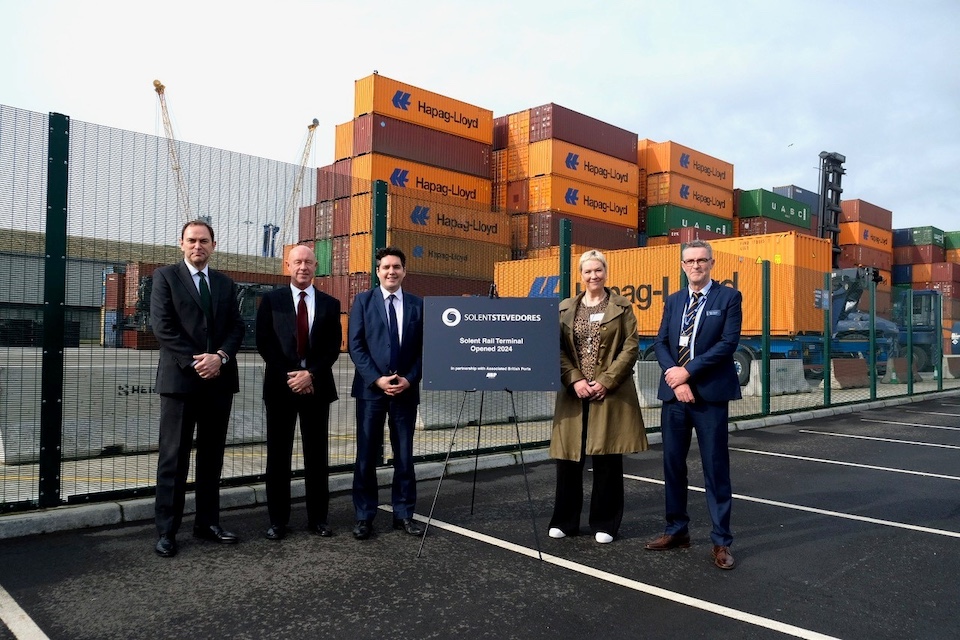The Port of Southampton continues to grow its rail freight operations and capacity. Last week, the UK Minister for Rail and HS2, Huw Merriman, visited the south coast of England port. He officially opened the new Solent Rail Terminal, marking the completion of a 17.5 million pound (20.5 million euros) partnership investment between Associated British Ports (ABP) and Solent Stevedores.
Southampton’s operators say this is a significant investment in rail freight capability at the port. They say the investment has created an 18-acre (7.25-hectare) facility for intermodal rail transport. By expanding the site, the port can offer laden and empty container handling, storage, maintenance, and repair within a single-site boundary—a first for the Port of Southampton.
Efficiency of modern rail freight operations
Huw Merriman has been taking a close interest in rail freight development. His interest may be encouraged by the UK Government’s target to grow rail freight by at least 75 per cent by 2050. “The railway plays a vital role in transporting goods to and from ports across the UK, boosting economic growth”, he said. “The opening of the Solent Rail Terminal demonstrates the strength of the industry and its ambitions to grow. This multi-million-pound upgrade will provide the increased capacity to allow the Port of Southampton to thrive.”

The efficiency of modern rail freight operations means that magnitudes more can be accomplished with installed infrastructure that seems insignificant when compared to the vast layouts of the twentieth century. Southampton’s thoroughly modern track layout facilitates simultaneous train arrival and departures, dramatically increasing terminal efficiency. Other works over the last eighteen months have seen the rail loading pad extended by 130 metres. All that means the larger intermodal site, including container storage with full maintenance and repair facilities, will be able to handle a 71 per cent increase in daily services with a 125 per cent increase in the number of containers handled.
Great example of increasing rail use
Developments such as this emphasise the radically shifted attitude towards rail freight development experienced in many parts of the wider logistics sector. “This is the latest project in our long-term investment programme”, said Stuart Cullen, Executive Chairman of Solent Stevedores. “It has greatly expanded our offering for container management at the port. Along with generating a significant increase in our efficiency at the rail terminal, it goes a long way to supporting the Government’s targets of reaching Net Zero by 2050.”
The multi-million-pound rail upgrade project has, according to the development partners, strengthened Southampton’s leading position as the UK’s number one gateway for deep-sea trade. “This project is a great example of expanding container handling, increasing rail use, reducing reliance on HVGs [heavy goods vehicles], and offering new services within the port boundary”, said Alastair Welch, Regional Director of ABP Southampton. “We are proud of our continued partnership with Solent Stevedores, supporting them on their journey to reduce carbon emissions both within their operations and across the wider port.”
Southampton is wholly owned by DP World, which has already instigated an incentive programme to encourage customers to forward containers by rail. The Middle East company has a long-term management agreement with Associated British Ports, which, in turn, contracts with Solent Stevedores for operations.